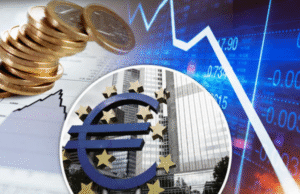$TAN $PLUG $NEE
#COP29 #GreenEnergy #CentralAsia #MiddleCorridor #SustainableTrade #RenewableEnergy #ClimateSummit #Baku #CaspianBasin #EnergyTransition #GlobalTrade #Decarbonization
While negotiations inside the official blue zone at COP29 in Baku have hit a wall, key players from the Caspian Basin and Central Asia are leveraging the sidelines to advance a transformative agenda. These nations are collaborating on green energy opportunities, focusing on the Middle Corridor, a critical trade route that links China to Europe via the Caucasus and Central Asia. This route not only serves as an important conduit for goods but also emerges as a promising pipeline for renewable resources like solar and wind energy. Central Asian stakeholders have expressed keen interest in integrating sustainable elements into this corridor, signaling a long-term pivot toward decarbonized trade. Discussions include the construction of renewable energy plants, electrified rail systems powered by clean energy, and digital technologies to reduce inefficiencies and emissions. Investors are closely watching developments, as such initiatives could unlock significant opportunities for renewable energy firms like $TAN and clean energy infrastructure developers.
The Middle Corridor, already gaining momentum due to geopolitical shifts such as supply chain diversification and reduced reliance on Russian logistics routes, could be poised to attract substantial investment following green upgrades. For instance, Kazakhstan, Azerbaijan, and Uzbekistan are key contributors to regional trade and increasingly see the need to ensure both economic and environmental resilience. Environmental, Social, and Governance (ESG)-aligned capital could flow into this corridor as institutional investors prioritize projects adhering to net-zero pledges. Moreover, such a development effort aligns with the European Union’s plans for carbon neutrality, suggesting possible financial and technical assistance from European partners. Market analysts suggest that renewable energy ETFs like $TAN, hydrogen companies like $PLUG, and energy-transition leaders like $NEE could benefit from cross-border collaboration on such infrastructure projects.
These initiatives are not just empty promises but are underpinned by concrete market incentives. With the global economy shifting towards decarbonization, the financial returns from investing in green infrastructure and renewable energy stand tall. Central Asia’s renewable energy potential, particularly in wind and solar, is vast and barely tapped into. Direct foreign investments in wind farms in Uzbekistan or solar fields in southern Kazakhstan have already shown promising returns, driven by both local government incentives and international financial support. The Middle Corridor’s transformation could accelerate these trends, creating a multiplier effect that boosts regional economies while also delivering favorable outcomes for reducing carbon emissions. This could spell increased demand for clean energy firms, while indirectly bolstering logistics companies that are modernizing their fleets to align with green trade mandates.
The “green” iteration of the Middle Corridor highlights an encouraging shift in international trade and energy dynamics. As the need for global decarbonization intensifies, regions historically associated with hydrocarbons like the Caspian Basin are showing a willingness to pivot toward alternative energy models. While the outcomes of COP29 remain inconclusive, these Central Asian initiatives underscore a pragmatic approach, focusing on actionable steps outside of contentious international negotiations. If successfully executed, this collaborative effort could redefine the region’s energy and trade frameworks, give rise to innovative financial instruments geared toward sustainability, and potentially provide a competitive advantage. Similar green corridors could also emerge as blueprints in other developing trade regions, amplifying the global market impact for clean energy technologies and green infrastructure financing platforms.







Comments are closed.